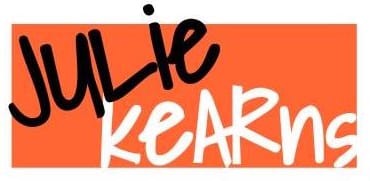Greener Gleaner

Overview: An estate liquidation model that dramatically increases potential for usable household products, materials, and supplies to be rerouted back into consumer-facing product streams in order to facilitate waste diversion opportunities mapping to lower value estates and estates that have already had a conventional estate sale with significant remainders.
Participants: Anyone preparing to rent a commercial dumpster in order to empty a house and/or facing the daunting task of emptying an estate with minimal support.
Customer Profiles: Bruce, 56, is feeling overwhelmed. As the most flexible of his siblings and the executor of his parents' estate, the responsibility of emptying the family home has landed in his lap. The house isn't huge – but it's full: of memories, triggers, and a whole lot of stuff. Bruce knows that someone, somewhere could use it. He knows that in an ideal world, he'd be able to sort and sift through the contents and route things - but with a full life going on outside of this extraneous commitment, he just can't justify the time costs of spending another year dealing with - and/or moving & storing - the still-significant mass of his parents' remainders.
Bruce is exhausted by what he doesn't know - and by what he does know: he doesn't have the car space to drive it all to goodwill. Estate financials barely covered funeral costs, and he's not equipped to plunk down the $7500 junk hauling bid. The finality and heavy lifting of committing to personally filling a 20 yard dumpster is the best option he's found...and it's a dreaded prospect.
Bruce isn't even that concerned about the environmental aspects (his college-aged kids are more in tune with global considerations) - but he doesn't like the few options that present.
Jeff, 45, has been selling houses for more than a decade now, and he wishes he had better, faster options for clients tasked with emptying family estates: delays can mean a five figure swing in his monthly projections, and he knows the longer he spends on any project, the lower his ROI on time and attention. He knows his clients balk at the idea of dragging a ginormous metal dumpster through dad's landscaping, of tossing decades of paperwork without going through it, but if he's going to get the house listed in time for the busy season (or before the market dips), he's gotta keep them moving. Most of them go with the roll-off company he's recommended, and he can even afford to pay for it out of their commissions. It's not something he advertises (feels yucky), but it's just part of his service package. Of course, if something more eco-friendly were available and could cut down on his clients' anxiety and timeline, he'd be glad to consider and promote it. Heck- he'd even pay for it.
Incidentally- Jeff also partners with a buddy to flip estates - and sometimes, they'll buy an entire house, still packed with stuff. There's not usually enough 'antiques' value to spend much time trying to sell items or lots - they'll get a few hundred dollars from a picker or two - but agreeing to deal with the remainders got them to 'yes' on their cash offer. If they could cut down on their labor and disposal costs without creating risk to the project timeline, that would be a win/win.
Economic Model:
- Gleaners are volunteers and GG subscribers who converge (as available) on estates to rescue useful items from the waste flow before estate owners commit to the economic, environmental, and social costs of choosing to throw away estate remainders.
- In some instances, Gleaners may pay for access/opportunity to cull from the estate's contents - perhaps through a monthly membership/access subscription.
- Gleaners may be paid by third parties to source specific product from estates. Gleaners may be retained by third parties to aggregate specific, useful inputs for commercial reuse.
- Greener Gleaner will weigh rescued content and provide an impact report to the client.
- Client pays Greener Gleaner a market-driven, weight based differential for the contents diverted from what would have otherwise been paid for disposal.
System Description: A trained team of professional dopamine-fueled treasure hunting volunteers converge on select estates to gather any/all viable products for use/sale/donation/repair based on known ecosystem capacity parameters.
Greener Gleaner fits a specific niche: once revenue-seeking efforts have ended (i.e. following an estate sale or after family members have taken everything of value) and before decision-maker enlists and pays a junk hauler to dispose of remainders.
House contents are liquidated to the extent that they can be routed back into commercial material and consumer product streams.
Greener Gleaner does not take responsibility for items that GG can not use: the customer remains responsible for remainders. Greener Gleaner refers to upstream and downstream partners as appropriate to connect customer with appropriate resources for their situation.
Sustainable Development: This model supports at least three of the UN's 17 Goals (SDGs):
Goal 12: Ensure sustainable consumption & production patterns
Goal 13: Take urgent action to combat climate change and its impacts
Future Growth Opportunities: Referrals from other estate sale companies, word of mouth opportunities within communities, and more.
Negotiate materials contracts with remanufacturers, resellers, white label producers, and wholesalers.
Replicate in other communities. Rinse and repeat.
This work represents the intellectual property of Julie Kearns for Junket: Tossed & Found (2010-2023). It may not be copied or shared without express permission. Inquiries may be directed to julie@shopjunket.com
